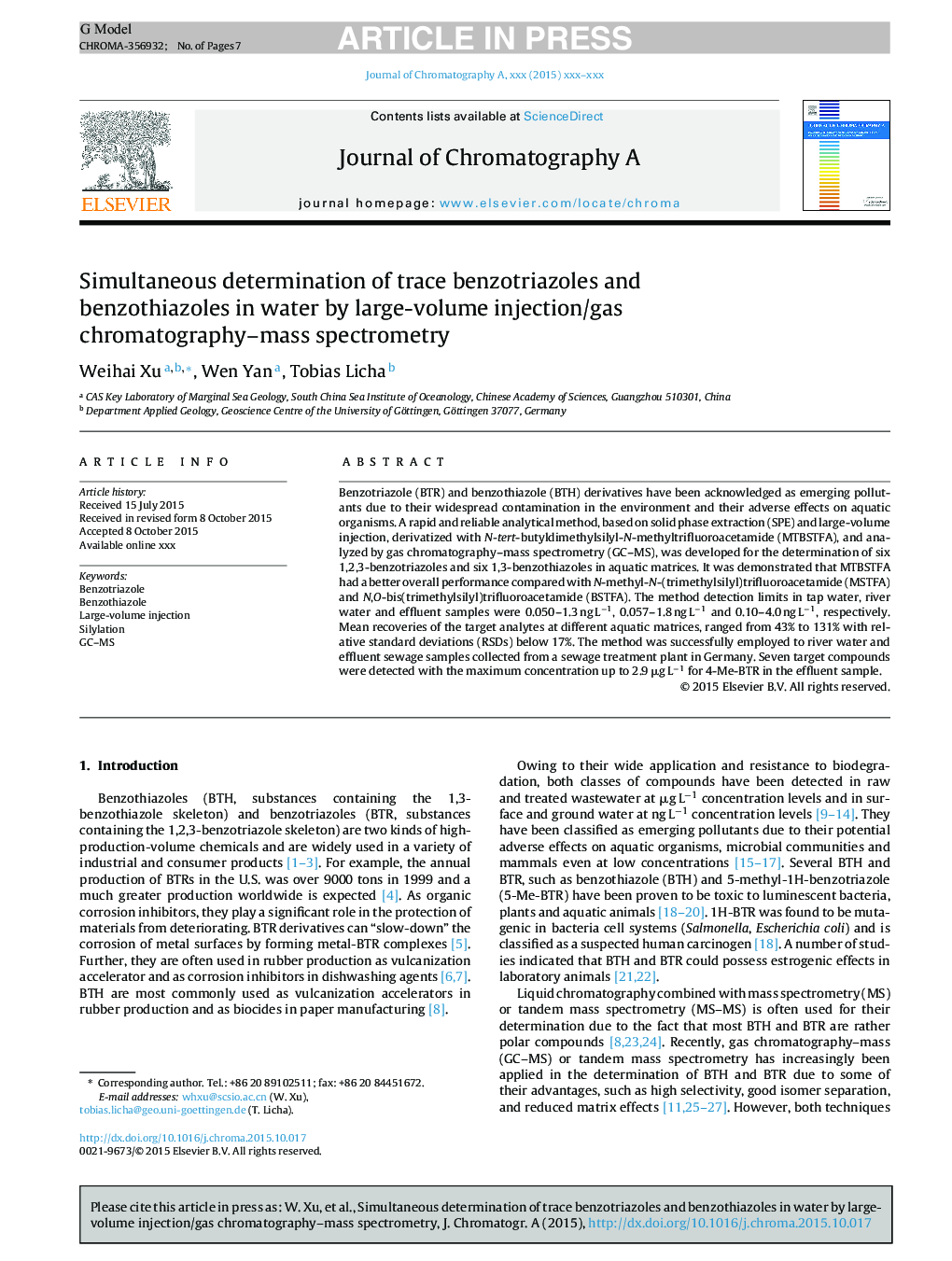| Article ID | Journal | Published Year | Pages | File Type |
|---|---|---|---|---|
| 7611106 | Journal of Chromatography A | 2015 | 7 Pages |
Abstract
Benzotriazole (BTR) and benzothiazole (BTH) derivatives have been acknowledged as emerging pollutants due to their widespread contamination in the environment and their adverse effects on aquatic organisms. A rapid and reliable analytical method, based on solid phase extraction (SPE) and large-volume injection, derivatized with N-tert-butyldimethylsilyl-N-methyltrifluoroacetamide (MTBSTFA), and analyzed by gas chromatography-mass spectrometry (GC-MS), was developed for the determination of six 1,2,3-benzotriazoles and six 1,3-benzothiazoles in aquatic matrices. It was demonstrated that MTBSTFA had a better overall performance compared with N-methyl-N-(trimethylsilyl)trifluoroacetamide (MSTFA) and N,O-bis(trimethylsilyl)trifluoroacetamide (BSTFA). The method detection limits in tap water, river water and effluent samples were 0.050-1.3 ng Lâ1, 0.057-1.8 ng Lâ1 and 0.10-4.0 ng Lâ1, respectively. Mean recoveries of the target analytes at different aquatic matrices, ranged from 43% to 131% with relative standard deviations (RSDs) below 17%. The method was successfully employed to river water and effluent sewage samples collected from a sewage treatment plant in Germany. Seven target compounds were detected with the maximum concentration up to 2.9 μg Lâ1 for 4-Me-BTR in the effluent sample.
Related Topics
Physical Sciences and Engineering
Chemistry
Analytical Chemistry
Authors
Weihai Xu, Wen Yan, Tobias Licha,
